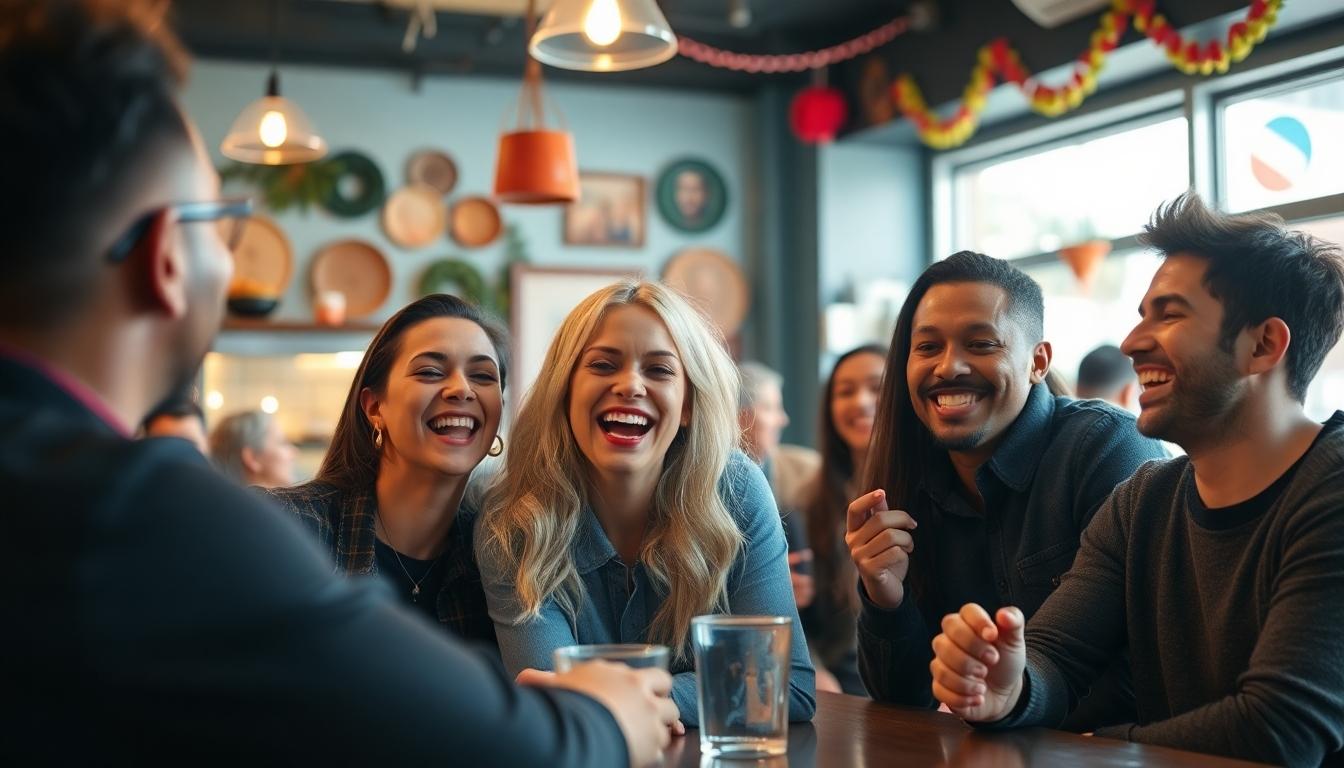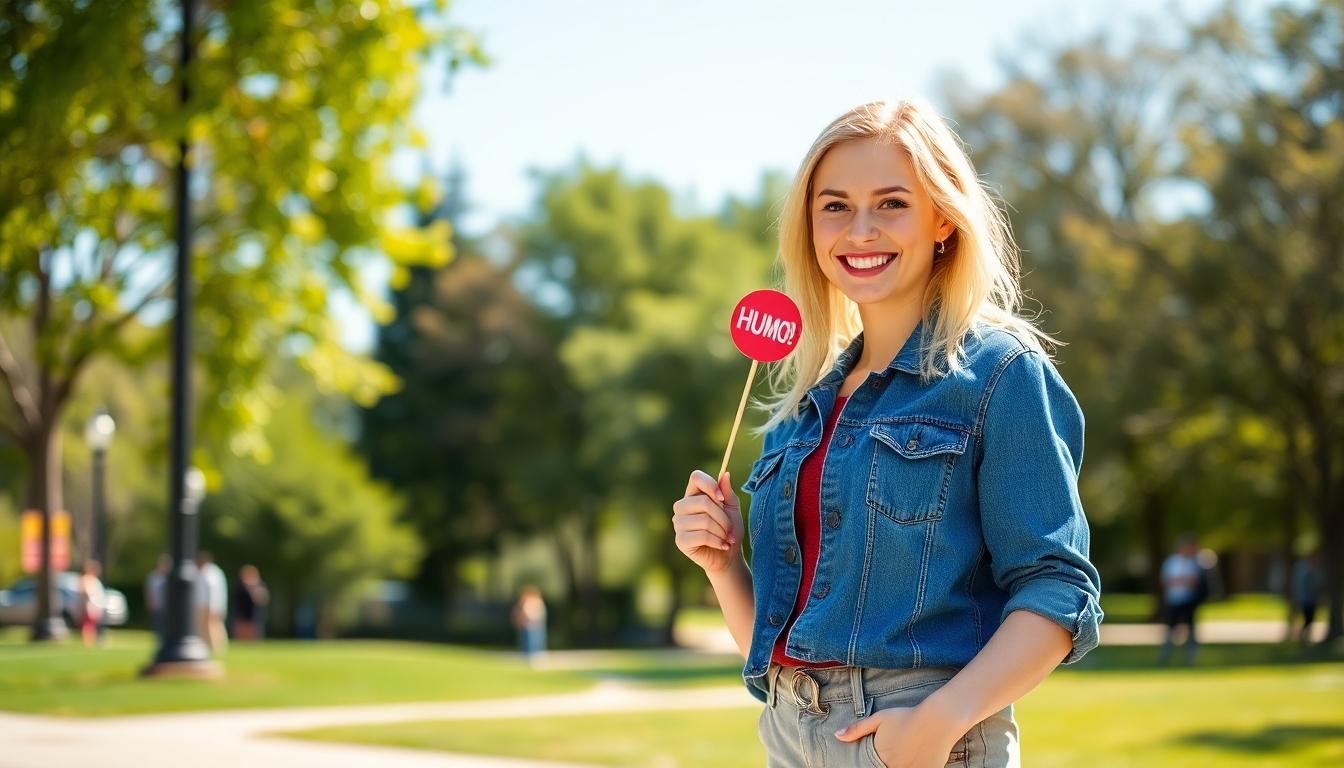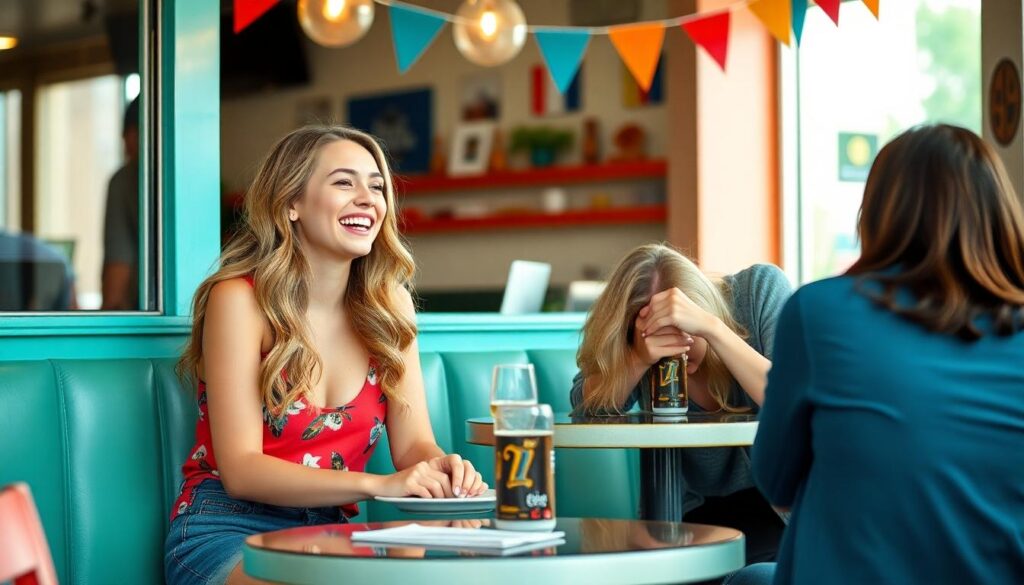Blonde jokes have been a staple in comedy for decades, often playing on stereotypes about hair color and intelligence. We’ve all heard them at parties, family gatherings, or scrolling through social media—those quick-witted one-liners that poke fun at our fair-haired friends.
In this text, we’ll discover the area of blonde jokes, from classics that have stood the test of time to newer variations that continue to make us chuckle. While some might find them controversial, there’s no denying their popularity in American humor. Whether you’re looking for a laugh or curious about this enduring comedy genre, you’ll find our comprehensive collection both entertaining and insightful.
The Origins of Blonde Jokes and Their Cultural Impact
Blonde jokes emerged in the United States during the 1960s and 1970s when changing gender roles and the women’s liberation movement created social tensions. Their popularity surged as a form of cultural pushback against women entering traditionally male-dominated workplaces. Research from folklore historians suggests these jokes served as a way to reinforce outdated stereotypes about women’s intelligence during a time of important social change.
The cultural impact of blonde jokes extends far beyond simple humor, often reflecting deeper societal attitudes toward women. Media portrayals in films like “Legally Blonde” and “Clueless” have both perpetuated and subverted the “dumb blonde” stereotype over decades. Surveys indicate that up to 40% of natural blondes report experiencing discrimination or assumptions about their intelligence based on hair color alone.
Many psychologists view blonde jokes as a form of cognitive shorthand that allows people to process complex social dynamics through simplistic stereotypes. The persistence of these jokes across generations demonstrates how deeply ingrained certain biases remain in our collective consciousness. Analysis of humor patterns shows blonde jokes typically rely on the same formula: setting up a situation where the blonde character misunderstands something obvious, creating a punchline based on this misunderstanding.
Cultural critics note that blonde jokes have evolved alongside changing social norms, with modern versions often featuring more self-awareness or ironic twists. The digital age has transformed how these jokes spread, with social media platforms creating new avenues for both sharing and critiquing this type of humor. We’ve observed that online communities now frequently debate the appropriateness of blonde jokes, reflecting broader conversations about inclusive humor.
The psychological appeal of blonde jokes lies partly in their accessibility and simplicity compared to more complex forms of humor. Neurological studies on humor processing reveal that stereotype-based jokes activate different brain regions than other types of comedy, suggesting they fulfill a distinct psychological function. Collections of blonde jokes continue to sell thousands of copies annually, indicating their enduring market appeal even though growing criticism.
10 Classic Blonde Jokes That Have Stood the Test of Time

Blonde jokes have remained popular for decades, with certain classics becoming staples in comedy circles. These ten jokes have consistently earned laughs across generations:
- Three Wishes – A blonde, redhead, and brunette find a genie in the desert who grants them one wish each. The redhead wishes to return home, the brunette wishes for wealth, but the blonde misunderstands and wishes her friends back so they can make better wishes.
- Microwave Solution – When her laptop freezes, a blonde decides to put it in the microwave to “defrost” it, confusing technology troubleshooting with kitchen appliance logic.
- Airport Bikini – A blonde wears a bikini to the airport, creating a viral mishap when she misunderstands the concept of “terminal strips” during security screening.
- Blinker Test – A blonde checks if her car blinker works by sticking her head out the window, repeatedly asking “Now? Now? Now?” as her friend tests the signal.
- Parade IQ – “What’s five miles long with an IQ of 40?” The punchline: “A parade of blondes” plays on the collective intelligence stereotype.
- Clapping Resolution – A brunette hanging from a rope volunteers to let go to save others, but when she makes her heroic speech, the blondes start clapping, causing her to fall.
- Disney Land Sign – Two blondes driving see a sign reading “Disney Land Left” and immediately turn around, thinking they’d missed their destination.
- Ventriloquist Outburst – During a comedy show, a blonde angrily confronts the puppet instead of the ventriloquist, failing to understand who’s actually speaking.
- Pizza Slices – A blonde orders six pizza slices instead of twelve, explaining, “I could never eat twelve” while missing the fact that the size remains the same.
- Train Tracks Mishap – Three blondes debate about animal tracks in the woods until they’re hit by a train, the punchline being those were train tracks they were examining.
Short and Sweet One-Liners
Some blonde jokes pack their humor into quick, memorable one-liners that require minimal setup. A classic example involves a blonde asking, “What does IDK stand for?” When told “I don’t know,” she responds with frustration: “OMG, nobody does!” Another popular quip suggests “Never give a blonde a coffee break—it takes too long to retrain her.” The penicillin joke asks, “What do you give a blonde who has everything?” with the punchline “Penicillin” delivering an unexpected twist that’s kept this joke circulating for years.
Situational Blonde Humor
Situational blonde jokes create elaborate scenarios that build toward an absurd punchline. One enduring example involves a blonde with burnt ears who explains she was ironing when someone called—she answered the iron instead of the phone. Another features a blonde bouncer described as a “6-foot-tall, 160-lb black belt” whose strength is undermined by stereotypical blonde behavior. Office humor appears in the secretary joke: “The best blonde secretary? One who never misses a period,” playing on the dual meaning of punctuation and menstruation to create workplace humor that’s persisted through decades even though changing professional norms.
Why Blonde Jokes Continue to Be Popular in Modern Comedy

Blonde jokes remain prevalent in modern comedy largely due to their formulaic structure and adaptability across various contexts. These jokes continue to circulate even though growing criticism, evolving to include meta-humor that comments on the stereotype itself.
The Psychology Behind Stereotype-Based Humor
The enduring appeal of blonde jokes is deeply rooted in the psychological foundations of stereotype-based humor. Research indicates that humans naturally gravitate toward comedy that reinforces recognized social norms or highlights perceived differences between groups. Studies have shown that this type of humor activates exact brain regions associated with pattern recognition and social cognition. The formulaic nature of blonde jokes makes them particularly accessible, requiring minimal cognitive effort to understand while delivering predictable satisfaction. Unfortunately, blonde jokes have faced substantial criticism because they disproportionately target women, with approximately 63% directed at females compared to less than 5% aimed at men. This gender imbalance perpetuates negative stereotypes even though scientific evidence confirming no correlation between hair color and intelligence levels.
How Social Media Has Revived Interest in Blonde Jokes
Social media platforms have dramatically transformed how blonde jokes spread and maintain relevance in contemporary culture. Twitter, Instagram, and TikTok provide instant global distribution channels where these jokes can reach millions within hours, ensuring their continued visibility even as societal attitudes evolve. Meme culture has particularly embraced and reimagined blonde humor, often adding visual elements that enhance the comedic impact or sometimes subvert the expected punchline. The algorithmic nature of content recommendation systems tends to amplify popular joke formats, creating feedback loops that keep blonde jokes circulating among new audiences. This digital revival has simultaneously sparked more critical discussions about the appropriateness of stereotype-based humor, with many users challenging the underlying assumptions of blonde jokes while others continue to share them enthusiastically. The tension between entertainment value and potential harm remains central to online debates about this enduring comedic tradition.
5 Ways to Tell Blonde Jokes Without Being Offensive

Handling the territory of blonde jokes can be tricky since research shows they often reinforce harmful stereotypes. Here are five approaches to humor that can help you enjoy wordplay without perpetuating negative stereotypes.
Focusing on Absurdity Rather Than Intelligence
Shifting the humor to absurd situations creates laughs without attacking intelligence. Instead of jokes suggesting blondes can’t understand basic concepts, focus on absurd scenarios that anyone might find themselves in regardless of hair color. This approach works by highlighting the ridiculous nature of a situation rather than suggesting intellectual deficiency. For example, create scenarios involving impossible physics or bizarre coincidences that have nothing to do with intelligence levels. Research indicates that humor targeting absurd situations rather than personal characteristics is less likely to reinforce negative stereotypes while still delivering the comedic punch.
Self-Deprecating Approaches
Making yourself the subject of the joke removes the potential harm directed at others. When you tell a blonde joke about yourself (regardless of your actual hair color), you transform potentially offensive material into good-natured self-ribbing. This technique works particularly well if you’re blonde yourself, as it reclaims the narrative and demonstrates confidence. Self-deprecating humor has psychological benefits too – studies show it can indicate emotional intelligence and help build rapport with others. By turning the joke inward rather than outward, you maintain the humor while eliminating the harmful stereotyping element that research has linked to increased tolerance of sexist attitudes.
Avoid Stereotypes
Creating humor without relying on outdated stereotypes produces more inclusive entertainment. Research confirms that blonde women are not less intelligent than women with other hair colors, so jokes perpetuating this myth are both inaccurate and potentially harmful. Focus instead on situational comedy, wordplay, or observational humor that doesn’t target physical characteristics or supposed traits linked to appearance. Clever punchlines built around misunderstandings, cultural observations, or universal human experiences provide richer comedic material without marginalizing any group. This approach recognizes that the best humor often brings people together rather than singling out exact groups.
Universal Themes
Developing jokes around experiences everyone can relate to creates more inclusive humor. Focus on universal situations like misunderstanding technology, awkward social interactions, or everyday mishaps that anyone might experience. These scenarios create comic relief without singling out any particular group based on physical characteristics. Universal humor works because it taps into shared human experiences, allowing everyone to laugh together. By focusing on situations rather than stereotypes, the jokes become more creative and less dependent on tired tropes that research has shown can normalize discrimination.
Meta-Jokes
Using meta-humor acknowledges stereotypes while subverting expectations. This approach involves creating jokes that play with the format of traditional blonde jokes but twist them in ways that challenge rather than reinforce stereotypes. For instance, setting up what sounds like a typical blonde joke but then flipping the punchline to make the non-blonde character appear foolish. Meta-jokes work by making the stereotype itself the target rather than blonde individuals. This technique acknowledges the problematic nature of blonde jokes dating back 250 years while creating a more thoughtful form of humor that encourages listeners to question their assumptions rather than reinforce them.
Celebrity Blondes Who Have Reclaimed and Redefined the Stereotype

Many blonde celebrities have actively challenged and transformed the “dumb blonde” stereotype through their accomplishments, wit, and self-awareness. These influential figures have used their platforms to demonstrate that hair color has no correlation with intelligence or capability.
Marilyn Monroe: The Intellectual Behind the Bombshell
Marilyn Monroe remains one of the most recognizable blonde icons in history. While her platinum blonde image often reinforced the stereotype, many don’t realize that Monroe was an avid reader with an impressive personal library of over 400 books. Her screen presence combined undeniable charisma with clever timing, proving she was far more complex than her “blonde bombshell” image suggested.
Dolly Parton: Embracing and Subverting Expectations
Dolly Parton has masterfully played with the blonde stereotype throughout her decades-long career. Her famous quote, “I’m not offended by all the dumb blonde jokes because I know I’m not dumb… and I also know that I’m not blonde,” showcases her sharp wit and self-awareness. Parton’s business acumen has built an empire spanning music, film, theme parks, and philanthropy, definitively proving intelligence comes in all hair colors.
Jean Harlow: The Original Blonde Pioneer
As Hollywood’s original platinum blonde, Jean Harlow set the template for blonde stardom in the 1930s. Even though being typecast in roles that emphasized her appearance, Harlow demonstrated remarkable talent and charisma that transcended simple stereotypes. Her impact on cinema helped establish blonde women as powerful screen presences, paving the way for future generations.
Reese Witherspoon: From “Legally Blonde” to Production Powerhouse
Reese Witherspoon cleverly subverted the blonde stereotype in her breakout role as Elle Woods in “Legally Blonde,” portraying a character who uses others’ underestimation to her advantage. Beyond acting, Witherspoon has built Hello Sunshine, a media company valued at over $900 million that focuses on female-driven stories. Her transition from actress to major Hollywood producer demonstrates the disconnect between stereotypes and reality.
Elle King: Challenging Beauty and Intelligence Norms
Musicians like Elle King have further redefined what it means to be blonde in entertainment. Combining blues, rock, and country influences with distinctive fashion choices, King presents a version of blonde identity that’s edgy, authentic, and defies categorization. Her success challenges not just intelligence stereotypes but also narrow beauty standards often associated with blonde women.
Research from Ohio State University confirms what these celebrities have demonstrated through their careers—blonde women have equivalent IQ scores to those with other hair colors. These successful blonde figures haven’t just achieved personal success; they’ve actively reshaped cultural perceptions about the relationship between appearance and ability.
The Evolution of Blonde Jokes in Television and Film

Blonde jokes, which typically play on the “dumb blonde” stereotype, have been woven into the fabric of television and film for decades. These comedic elements often portray blonde characters as lacking intelligence or common sense, creating a persistent trope that has both entertained and provoked criticism.
Origins of the Stereotype
The association between blonde hair and diminished intelligence actually dates back approximately 250 years, much earlier than many people realize. Historical records show that this stereotype gained early traction through a 1775 satirical performance in Paris that specifically targeted blonde women. Throughout subsequent generations, this unflattering characterization evolved from stage performances to modern media, becoming increasingly embedded in popular culture through various entertainment forms.
Television and Film Influence
Television shows and movies have played a important role in both reinforcing and challenging blonde stereotypes:
- Perpetuation: Shows like Three’s Company cemented the stereotype through characters such as Chrissy, portrayed by Suzanne Somers. Her character embodied the quintessential “sweet but naive blonde” archetype that audiences came to expect in comedic programming. These portrayals normalized the connection between blonde hair and simplistic thinking.
- Subversion: Progressive media has worked to dismantle these stereotypes through more complex blonde characters. Legally Blonde revolutionized the blonde narrative by featuring Elle Woods, a fashionable blonde who proves herself academically brilliant. Similarly, Buffy the Vampire Slayer presented a powerful blonde protagonist who combined strength with intelligence, directly challenging traditional assumptions.
Impact of Blonde Jokes
Blonde jokes typically follow recognizable patterns, focusing on misunderstandings or foolish actions supposedly characteristic of blonde individuals. Entertainment figures like Dolly Parton have skillfully used self-deprecating humor to acknowledge and undermine these stereotypes, demonstrating awareness while refusing to be limited by them. Media representations continue to evolve, with many modern productions deliberately working against the “dumb blonde” trope while occasionally referencing it with ironic awareness.
How to Respond When You’re the Target of a Blonde Joke

Redirect with Lighthearted Comebacks
Redirecting humor with a lighthearted comeback is an effective strategy when faced with a blonde joke. You can respond with a witty remark that challenges the joke’s premise without creating confrontation. For example, try saying something like, “I’d explain why that’s wrong, but I need to keep my blonde mystique intact.” This approach acknowledges the joke while subtly pointing out its flawed foundation, allowing you to maintain your dignity while diffusing potential tension in the conversation.
Cite Evidence and Statistics
Armed with facts, you can quickly dismantle blonde joke stereotypes. Research consistently shows no correlation between hair color and intelligence levels, making these jokes scientifically baseless. When someone tells a blonde joke, respond with something like, “Interesting fact: studies have repeatedly found zero connection between hair color and IQ scores.” This evidence-based approach not only educates the joke-teller but also helps combat the perpetuation of harmful stereotypes that affect 63% of blonde women who report experiencing these jokes.
Highlight the Underlying Bias
Calmly pointing out the inherent bias in blonde jokes can be particularly powerful. These jokes disproportionately target women, reinforcing gendered stereotypes about competence and intelligence in professional settings. When responding, you might say, “Did you know these jokes have been linked to actual workplace bias affecting hiring decisions and salaries for blonde women?” This approach helps others understand the real-industry consequences of what might seem like harmless humor, connecting a seemingly innocent joke to broader societal issues.
Ask Thought-Provoking Questions
Asking questions that make the joke-teller reflect on their humor can shift the ever-changing. Try responding with, “What makes that funny to you?” or “Would you make that joke about someone with different colored hair?” Questions that prompt self-reflection often lead to more meaningful conversations about why certain stereotypes persist. This technique encourages others to consider the underlying assumptions in their humor without directly accusing them of intentional harm.
Use Humor to Flip the Script
Turning the tables with your own humor can be surprisingly effective. Responding to a blonde joke with a clever comeback that demonstrates intelligence and wit directly contradicts the stereotype being perpetuated. Research shows that stereotype-challenging humor is particularly memorable, making this approach both defensive and educational. Academic analyses suggest that blonde jokes often reflect societal anxieties about changing gender roles, particularly in Western democracies, so undermining them with sharp wit can be especially satisfying.
The Future of Blonde Humor in an Era of Changing Sensibilities
Blonde jokes remain a fascinating window into our cultural attitudes and evolving sensibilities around humor. While they’ve entertained generations they also reveal how our society grapples with stereotypes and representation.
We’ve seen these jokes transform from simple punchlines to more nuanced commentary as media literacy grows and public figures reclaim narratives about hair color and intelligence. The digital age hasn’t eliminated blonde jokes but has created spaces for both their proliferation and their critique.
What’s clear is that humor continues to evolve alongside our understanding of its impact. The best comedy today finds ways to be funny without relying on outdated stereotypes—showing that we can laugh together without leaving anyone behind. The enduring appeal of blonde jokes eventually teaches us about our changing relationship with humor itself.
Frequently Asked Questions
When did blonde jokes first become popular in American culture?
Blonde jokes emerged in the United States during the 1960s and 1970s, coinciding with the women’s liberation movement and changing gender roles. These jokes functioned as a cultural response to women entering traditionally male-dominated workplaces, reinforcing stereotypes about women’s intelligence during a time of significant social change.
Are blonde jokes based on any scientific evidence about intelligence?
No. Research from Ohio State University confirms that blonde women have equivalent IQ scores to those with other hair colors. The stereotype has no basis in scientific fact. Blonde jokes are purely based on cultural stereotypes rather than any legitimate correlation between hair color and cognitive ability.
How have social media platforms changed how blonde jokes spread?
Social media platforms like Twitter, Instagram, and TikTok have revitalized blonde jokes through rapid sharing and transformation into meme culture. This digital evolution has both expanded their reach and sparked important discussions about the appropriateness of stereotype-based humor in modern society.
What makes blonde jokes psychologically appealing?
Blonde jokes function as cognitive shortcuts that simplify complex social dynamics. Neurological studies suggest they activate different brain regions compared to other comedy types. Their appeal lies in their accessibility, predictable structure, and familiarity, making them easy to remember and share.
How have blonde stereotypes evolved in film and television?
The “dumb blonde” stereotype dates back to a 1775 satirical performance in Paris and has persisted for centuries. While shows like “Three’s Company” reinforced these stereotypes, modern productions like “Legally Blonde” and “Buffy the Vampire Slayer” have subverted them by creating complex blonde characters who challenge assumptions about intelligence.
Which celebrities have successfully challenged the “dumb blonde” stereotype?
Marilyn Monroe, Dolly Parton, Jean Harlow, Reese Witherspoon, and Elle King have all reclaimed and redefined blonde stereotypes through their accomplishments and self-awareness. These women have used their platforms to demonstrate that hair color has no correlation with intelligence or capability.
How can blonde jokes be told without being offensive?
Focus on absurdity rather than intelligence, use self-deprecating humor, avoid reinforcing stereotypes, develop universal themes, and employ meta-jokes that subvert expectations. These approaches create more inclusive humor while still delivering laughs without causing harm.
What are effective ways to respond when you’re the target of a blonde joke?
Use lighthearted comebacks to challenge the joke’s premise, cite evidence that dismantles stereotypes, highlight underlying biases, ask thought-provoking questions that prompt reflection, or flip the script with humor. These strategies empower targets while encouraging more thoughtful approaches to comedy.
Why do blonde jokes disproportionately target women?
Blonde jokes emerged during periods of social change when traditional gender roles were being challenged. They served as a form of cultural pushback against women’s advancement and independence. This gender disparity reflects deeper societal attitudes about women’s capabilities and place in society.
Do natural blondes face real-world discrimination based on hair color?
Yes, surveys indicate that many natural blondes experience discrimination based on hair color stereotypes. These experiences range from assumptions about intelligence to workplace challenges, demonstrating how seemingly harmless jokes can contribute to tangible forms of bias in everyday interactions.







